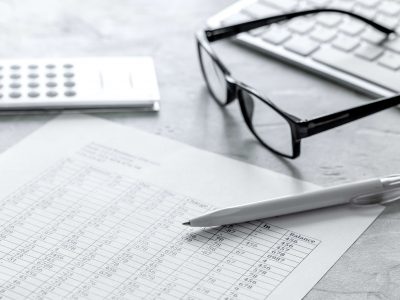
Liabilities should come into consideration for future budgeting decisions and cash flow management. Accounting software that syncs with bill pay solutions and other financial platforms enables automated journal entries and transaction verification with a two- or three-way sync. In turn, this reduces the team’s reliance on error-prone manual data entry.

Assets and liabilities examples
Whilst an expense is a cost of operations that a company incurs to generate revenue but for only one fiscal year. You record supplies as a current asset in the assets section of the balance sheet. Things like pens, printer paper, and sticky notes are considered supplies.
► Income or Revenue
When the company’s accounting department receives the bill for the total amount of salaries due, the accounts payable account is credited. Accounts payable are found in the current liabilities section of the balance sheet and represent a company’s short-term liabilities. After the debt has been paid off, the accounts payable account is debited and the cash account are liabilities expenses is credited. The financial statements of a business which report its profitability and financial position primarily consist of a profit and loss account and a balance sheet.

Small Businesses and Sole Proprietorships
- When your team purchases an annual software license, Ramp identifies it as a prepaid expense and helps you amortize it correctly over the subscription period.
- They’re all about performance—revealing whether your business is rolling in dough or barely scraping by.
- All the maintenance expenses fall under utility expenses for all public utilities and services.
- Any third-party links are provided for informational purposes only.
- Subsequently, companies transfer the total expense recorded in that account to the income statement.
- A company that can’t afford to pay may not be operating at the optimum level.
- Advertising costs, however, that generate future benefits beyond the current year may be treated as capital expenses and have to be capitalized.
When your team purchases an annual software license, Ramp identifies it as a prepaid expense and helps you amortize it correctly over the subscription period. This automation eliminates the manual work of reviewing every transaction and reduces the risk of misclassification that comes with human error. These are business liabilities that are probable, but not certain; in other words, the need to pay them is contingent on some event. These are tied to daily business operations or urgent bills.

Determine if it’s an obligation or cost
- A liability is anything that’s borrowed from, owed to, or obligated to someone else.
- The accounts related to incomes, gains, expenses and losses are classified as nominal accounts.
- However, companies rarely pay their employees for the costs incurred.
- This guide will break down each concept, show how to record them correctly, and also explain how you streamline the entire process of expense management.
- Equity is what you get when you subtract liabilities from assets.
Focus on smart decisions that help you increase your worth while decreasing your debts. These examples show how financial health depends on managing both sides effectively. Here’s a simplified version of the balance sheet for you and Anne’s business. Suspense Account A few days later, you buy the standing desks, causing your cash account to go down by $10,000 and your equipment account to go up by $10,000.
Examples of liability accounts that display on the Balance Sheet include Accounts Payable, Sales Tax Payable, Payroll Liabilities, and Notes Payable. In this Accounting Basics tutorial I discuss the five account types in the Chart of Accounts. I define each retained earnings account type, discuss its unique characteristics, and provide examples.

Learn the difference between assets vs. expenses and why one holds more value for your business than the other. If you have fixed assets worth $1.2 million and accumulated depreciation of $350,000, that reduces the value of the fixed asset account to $850,000. When you make out your financial statements for a month, quarter or year, you report depreciation as an expense on the income statement. If, say, your fixed assets depreciate $3,400 in January, you record that expense and subtract it from your income with other expenses. Even though you haven’t spent any money on depreciation, it reduces your net income. Assets are also grouped according to either their life span or liquidity – the speed at which they can be converted into cash.
- In sole proprietorship, a single capital account titled as owner’s capital account or simply capital account is used.
- If you’re still manually tracking your balance sheets, it might be time to explore accounting automation software.
- Accrued expenses are recorded in the income statement as an expense, but they are also recorded in the balance sheet as a current liability.
- Keeping track of supplies helps businesses stay ready for work every day and keeps their working capital healthy.
- Withdrawals are cash or assets taken by a business owner for his personal use.
Presentation of Accruals in the Balance Sheet
Let’s look at a historical example using Apple’s 2022 balance sheet. The current/non-current liabilities are are listed under the liabilities and shareholder’s equity section. In accounting, liabilities and expenses represent two distinct financial concepts. There are some differences in the recognition timing of liabilities and expenses. Expenses are recognized in the period they are incurred to generate revenue, regardless of when cash is exchanged.
